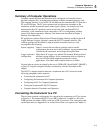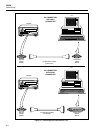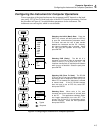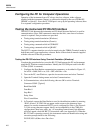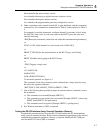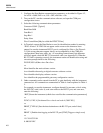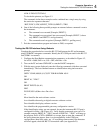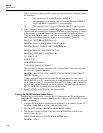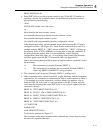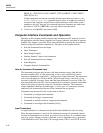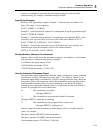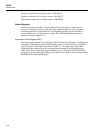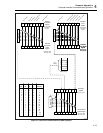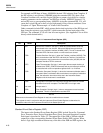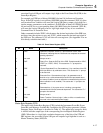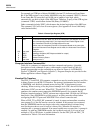
Computer Operations
Testing the Instrument/PC RS-232 Interface
4
4-11
PRINT INPUT$(46, #1)
4. Enter SHIFT<F5> to run the program entered in step 3.If the RS-232 interface is
operating correctly, the instrument returns an identification string and execution
prompt similar to the following:
*IDN?
FLUKE,2635A,0,Mn.n An.n Dn.n Ln.n
=>
Mn.n identifies the main software version.
An.n identifies the analog-to-digital converter software version.
Dn.n identifies the display software version.
Ln.n identifies the programmable gate-array configuration version.
If the identification string was not returned, be sure the instrument RS-232 port is
configured for Echo = On (Figure 4-2). Verify that the commands were exact. For
example, entering PRINT #1, "*IDN" instead of PRINT #1, "*IDN?" will hang up
the program. Press <CNTL><BREAK> to escape, then re-enter the commands. If
the wrong characters appear, there is an incompatibility in the COM port
configurations (baud rate, parity, etc.). If everything seems normal, but characters
still don’t appear, check the RS-232 connection cable (see Appendix D).
One of the following three possible prompts are returned when a command is sent to
the instrument:
=> The command was executed [Example, PRINT 1].
!> The command was recognized, but not executed [Example, PRINT 3,
where only PRINT 0 and PRINT 1 are legal entries].
?> The command wasn’t recognized [Example, PRITN 1, spelling error].
5. Other commands can be entered from the PC to gain familiarity with the instrument
command set. All commands are summarized in Table 4-4 and explained in Table 4-
5. For example: to reset the instrument, configure channel 0 to measure volts dc
using the 300V DC scale (scale 4), send scan results to the RS-232 port, and scan
once, enter the following, then enter SHIFT<F5> to run [only the output of the last
command is shown]:
PRINT #1, "*RST":PRINT INPUT$(10, #1)
PRINT #1, "FUNC 0, VDC,4":PRINT INPUT$(18, #1)
PRINT #1, "PRINT_TYPE 0,0":PRINT INPUT$(20, #1)
PRINT #1, "PRINT 1":PRINT INPUT$(13, #1)
PRINT #1, "*TRG":PRINT INPUT$(83, #1)
15:17:0407/21/94
0:000.00 VDC
ALM:15DIO:255TOTAL:0
To decode the printout, see Figure 5-3.
The commands in the above example can be combined into a single entry by using
the semicolon separator character:



